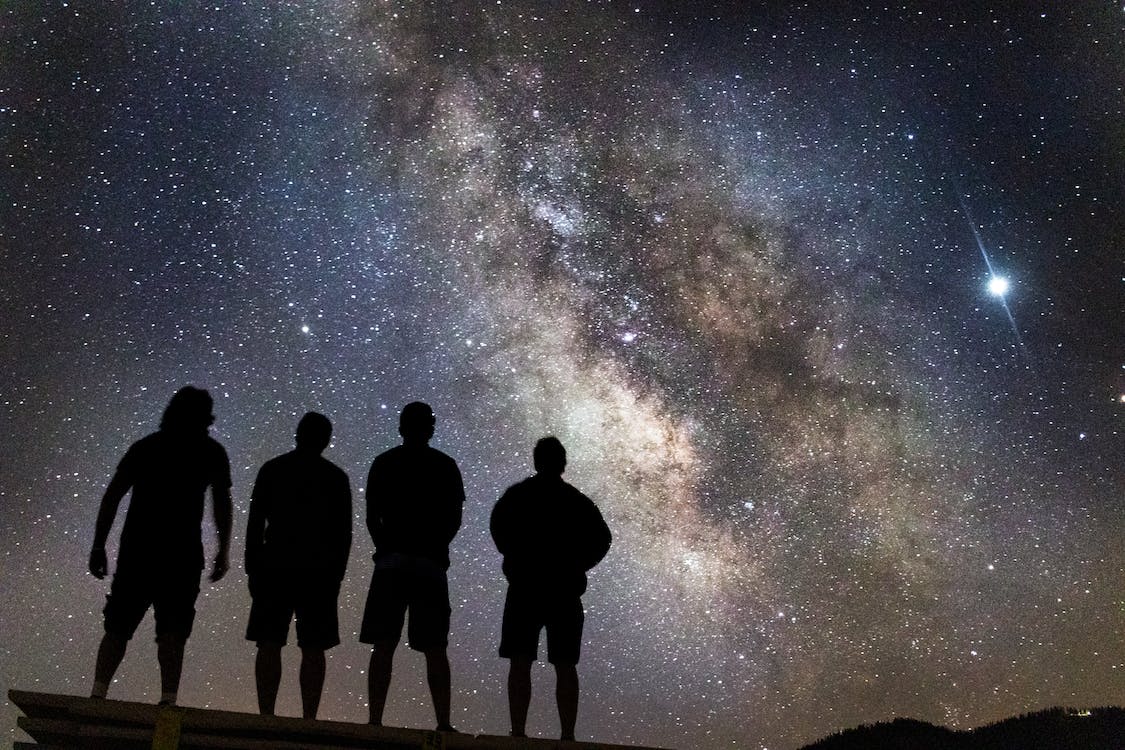Introduction
Stargazing is one of the best outdoor activities to do with friends and family. Still, remember a few essential things if you want to make the most of your experience. Ever since the beginning of time, people have been examining the sky. It makes sense that curiosity for space has been stronger over time. There are many ways to view the wonders of the cosmos from the comfort of Earth, from recognizing planets with the unaided eye to discovering galaxies with a telescope. Starting with amateur astronomy or stargazing only requires a little knowledge or equipment, and you can do it practically anywhere. There is much to learn, whether you use a telescope, binoculars, an app, or just your eyes.
What is Stargazing?
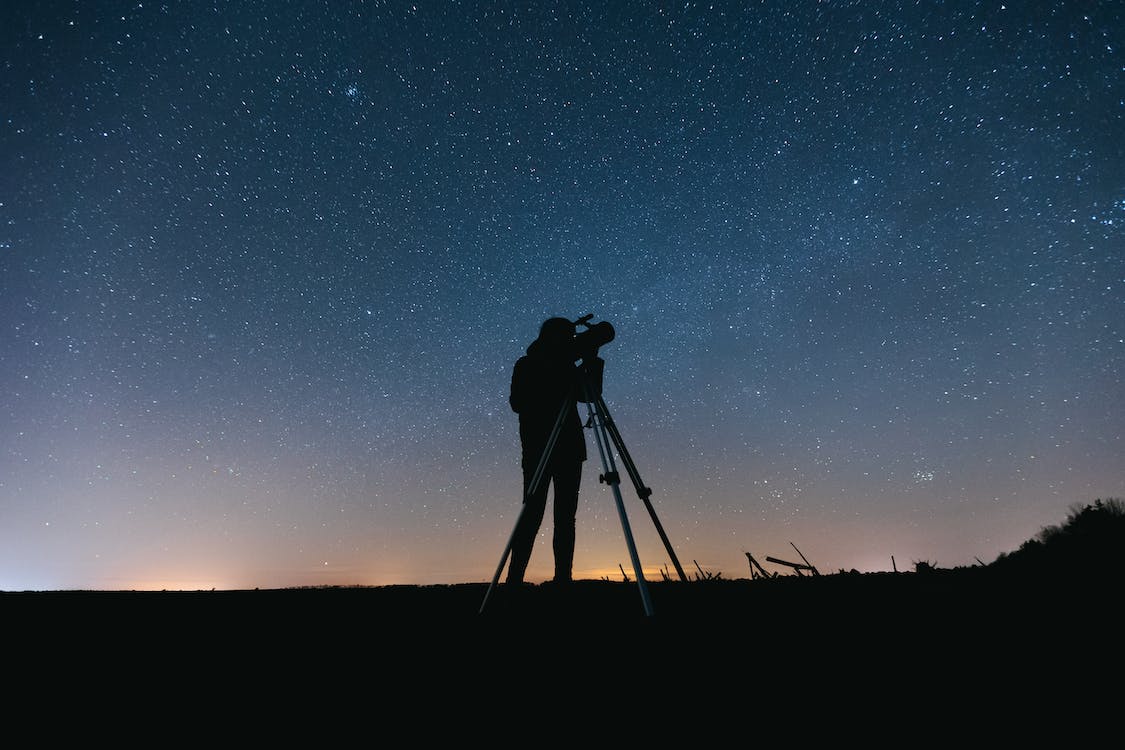
The frantic way of life, infatuation with technology, and the maxim that “bigger is better” have influenced amateur astronomy today. Only a few purists still engage in the casual, soothing activity of stargazing. Some people find that stargazing serves as a soothing diversion from the stresses and responsibilities of daily life rather than adding to them.
The act of stargazing involves observing the stars in any practical way. It’s essential to look at the skies as broadly and inclusively as possible when viewing the stars. Humans have been enthralled by the exciting practice of stargazing for millennia. The night sky is a tranquil and mind-blowing canvas of beauty. People have puzzled about the meaning and significance of the stars as they have gazed up at them for millennia. Stargazing may be a rewarding and soothing activity whether you’re an expert or novice astronomer. In this blog post, we’ll look at the benefits of stargazing, the tools required, and some of the best spots in the globe for it.
Beginner’s Tips for Stargazing
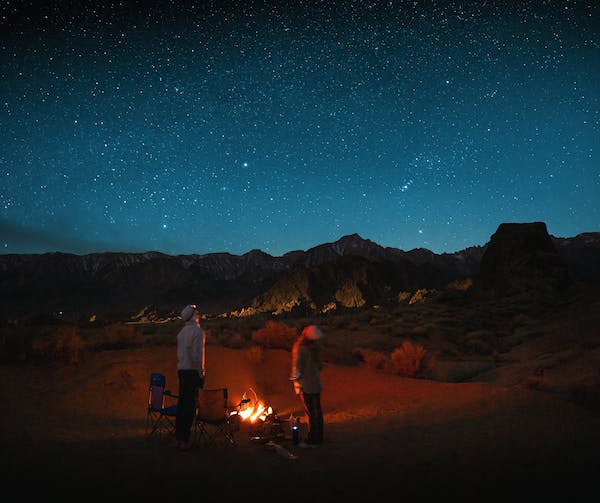
Beginners may find astronomy intimidating because there is a vast cosmos out there. The basics of astronomy don’t have to be difficult, though. You can navigate the night sky with the help of various expert recommendations. There is a handbook accessible for all of these things, whether you’re looking for your first telescope, want to understand the constellations, or want to learn how to use star charts. The unaided eye is the ideal tool for beginning an exploration of the night sky. Here are some pointers for getting started with astronomy for beginners and ideas for strengthening your cosmic connection.
1. Choose the Best Location
Although certain places are better than others for stargazing, you can do it anywhere, including from your window, balcony, backyard, neighborhood park, or countryside. Wherever you choose to watch from, it’s essential to research the Bortle class for that area. The measure of a sky’s blackness is called the Bortle scale after its inventor, amateur astronomer John E. Bortle. It ranges from Class 1, the darkest skies on Earth, to Class 9, the sky in urban areas. There is much to view in the night sky, even in Class 9 sites. You may find out what sky objects you should be able to see by using a tool like clearoutside.com to search up the Bortle class for your area.
2. Orient Yourself
Find out where the north, east, south, and west are from where you are. Like how the Sun rises in the east and sets in the west, so do the planets. The Moon likewise rises in the east and sets in the west, but depending on where you live and the season, it will rise or set farther north or south. Additionally, you can pick up a few shortcuts for estimating positions in the night sky. Often, sky locations are expressed in degrees, with 0 degrees representing the horizon and 90 degrees immediately overhead. The area of the sky covered by the width of your outstretched fist at arm’s length is around 10 degrees.
The area of the sky covered by the width of your outstretched fist at arm’s length is around 10 degrees. You’ll know that if Venus is said to be 15 degrees from the Moon at a particular time, that corresponds to about 1.5 outstretched fists. Additionally, as the positions of planets and other objects are frequently discussed concerning these standards, it will be helpful to learn which bright stars and constellations are visible as the seasons change. Once you start gazing up, planets are simple to identify since they shine brighter than most stars. Planets are typically still visible even in large cities since they are brighter than most stars.
3. Select the Right Equipment
Nowadays, a good smartphone app is the most helpful equipment for observing the stars. These apps can provide information about what is visible at night from your area and where to look. There are several to pick from, and their creators consistently update the best to maintain the accuracy and timeliness of the information. The next stage after astronomy with the naked eye is using binoculars. Although they are also available, astronomy-grade binoculars are not necessary. Using binoculars, you can view Jupiter’s moons, the reddish Mars, and the craters on the Moon. You’ll also be able to see faraway planets like Neptune and Uranus, which are typically invisible to the human eye.
4. Start with the Moon and Easy to Spot Objects
Observing the Moon is one of the easiest methods to start learning about astronomy. You can see the Moon with a telescope or a set of binoculars while keeping track of the lunar cycle. For instance, the full Moon seems flat and dazzlingly brilliant. The Moon’s craters will appear more dramatic when shaped like a crescent because the shadows will delineate them. It is better to conduct your observations at a time of the month when the Moon is only somewhat full if you aren’t going to observe the Moon directly. The finest time is when the Moon is fresh or crescent. In this method, you may see fainter things like planets without being blinded by the Moon’s intense light.
Moreover, when they are up, Saturn, Jupiter, Mars, and Venus are all relatively simple to find in the night sky. It’s likely a planet if you observe something that appears brighter than any other star. Io, Europa, Ganymede, and Callisto are just a few of Jupiter’s four big moons that can be seen with even a modest telescope. Their shifting locations from night to night add to the intrigue of watching them. To prepare for finding specific night sky objects, it can be beneficial to research how such things appear using your preferred observation mode.
5. Share the Fun with Others
You can begin pointing out things that can be seen with the naked eye to others once you’ve become familiar with them. Confidently pointing to a brilliant dot in the night sky and identifying it is tremendously satisfying. Additionally, you can instruct people on how to utilize the equipment you’ve been using, whether it’s a telescope, binoculars, or a stargazing app. Set up a tiny telescope in your neighborhood to get people interested in the night sky. Choose a location with nightly foot traffic, and confirm that the regulations of your city or municipality permit it. You can display simple-to-appreciate things to people like Jupiter, Saturn, or the Moon.
The Different Types of Celestial Objects

The Universe is beckoning, and it longs for you to be discovered. There are a ton of fascinating things to discover. Ten celestial objects that are excellent for novices using binoculars or small telescopes are listed below. The targets described here stand in for several cosmological objects. The size of each object makes it suitable for refractors, reflectors, catadioptric telescopes, or binoculars, and they are all simple to find.
1. Jupiter
The fifth and most giant planet in our solar system is called Jupiter. It is a gas giant made mostly of the gases hydrogen and helium. It’s also possible that Jupiter has a core made of heavier components. The largest planet in our solar system is Jupiter. It is an exciting and highly visible object. Even with tiny telescopes or binoculars, four moons can be observed. Certain cloud bands are also visible in favorable conditions, and the enormous red spot may be visible with larger telescopes and certain cloud features.
2. Moon
The Moon is a perpetually intriguing phenomenon that may be seen for virtually the entire year. Although it’s a common misconception, the Moon is not always the clearest during full moons. When it is a quarter or less, it is ideal. Since the Sun is now coming from the side and the Moon’s features produce extended shadows, the view via the telescope is now virtually plastic. The Moon’s borders and the “Terminator,” or line connecting the dark and lit regions, are the most intriguing places to study.
3. Saturn
Of all the planets, Saturn is presumably the most mysterious. Many people who first saw it were in awe of its rings. Saturn barely receives a quarter of the light since it is twice as far from the Sun as Jupiter. Despite being about the same size as Jupiter, Saturn appears smaller and fainter in the eyepiece due to its greater distance. Most observers attempt to compensate by raising magnification, which also magnifies air layer disturbances. A magnification between 100 and 150 is a good compromise unless vision is excellent. The rings of Saturn may only be visible as “ears” with a tiny telescope or in poor seeing conditions. Galileo observed this when he first used his telescope to observe Saturn. He concluded that these “ears” must be two nearby moons on either side of Saturn. However, two years later, the “moons” disappeared, reappearing two more years later. Galileo, at the time, found the “disappearance” quite perplexing, even though we now know it was caused by staring at the ring edge.
4. Alcor & Mizar
The Big Dipper is likely the most well-known asterism for those who like stargazing in the Northern Hemisphere. The constellation Ursa Major, sometimes known as the Great Bear, contains the seven stars that make up the Big Dipper. It is simple to locate and acts like Polaris’ compass. Dubhe and Merak, the two brightest stars, can be found toward the border of the outer bowl. You can travel five times their distance to Polaris, the Northern Star. Upon closer inspection, the Big Dipper reveals some surprises. If you point your telescope at the handle bend, you will see two stars. Alcor is a fainter star than Mizar, which is brighter. “Horse and Rider” is another name for them. Those with good vision can distinguish These two stars with the naked eye. If the visibility is good, pick a high magnification and examine Mizar more closely. You’ll see that Mizar has a close companion star as well.
5. Albireo
Hunter Albireo is the fifth-brightest star in the Cygnus (Swan) constellation. It looks like a single star to the unaided eye, but a telescope reveals it as a double star. The colors of both stars contrast sharply. The brighter star is yellow, while the fainter one is blue. It can be helpful to do this a bit out of focus when looking at vivid stars. The colors become more pronounced as the star disks become larger. This is because the eyes’ many color receptors may gather more color information. Play about with your focuser to see what suits you the best.
6. The M42 Orion Nebula
Orion is a constellation that includes the Orion Nebula. This stunning nebula, a portion of Orion’s sword, may be located right below Orion’s belt. One of the brightest nebulae, it can be seen with the unaided eye. Use your lowest magnification to ensure M42 fits in the field of view because it is more than an arc minute wide. The “Trapezium” of four stars at its center causes the surrounding gases to ionize and become charged, creating this stunning display. The Trapezium stars catch people’s attention because of their brightness. Still, if you look around you, you’ll find a lot of other stars and layers of ionized plasma.
7. M31 Andromeda Galaxy
The Andromeda Galaxy (M31) is a member of the Andromeda constellation. The item is the furthest that can be seen with the unaided eye. Given its size, it will almost definitely exceed the field of view of your telescope (binoculars have a wide enough field of view for this). Nevertheless, getting a firsthand look at another galaxy is an exciting experience. Andromeda’s brilliant central region makes its surroundings visible. The Andromeda Galaxy can be in the night sky in various ways. My favorite is the Cassiopeia “W”‘s most pointed portion extended three times.
8. The M13 Hercules Cluster
The Hercules Global Cluster is in the constellation of Hercules, as its name already suggests. Image sources: ESA, NASA. Even with tiny telescopes, the Globular Cluster, which is almost as old as the known cosmos, provides stunning views. Hercules Globular Cluster is harder to locate. The first step is to locate “The Keystone,” a trapezoid-shaped cluster of four stars in the constellation of Hercules. M13 separates Eta Herculis and Zeta Herculis. These are the two stars seen in “The Keystone” by Arcturus. On the Eta-Zeta line, move slightly towards Eta until you come across this lovely globular cluster. Two prominent stars, Vega and Arcturus, are helpful if you’re having trouble finding “The Keystone .”If you draw a straight line from Vega to Arcturus, “The Keystone” is about a third of the way there.
9. NGC 869 and NGC 884 form a Double Cluster
William Olcott hailed the Double Cluster as “one of the finest clusters for a small telescope.” The contrasted colors are stunning, and the landscape is covered with glittering stars. What we see are two separate open clusters. Despite being separated by around 800 light years, a tiny telescope can see both because of their relative positions in the sky. The constellation of Perseus contains the Double Cluster. The Cassiopeia constellation may be used to locate it with ease. Finding the Double Cluster is as simple as going to the next bright star after following the inner leg of the shallow half of the “W” for roughly two-thirds of the way.
10. The M27 Dumbbell Nebula
The Dumbbell Nebula, which has a magnitude of 7.5, is the lightest item in our Top-10 list. However, it can be easily located and is the second-largest planetary nebula in the northern sky. Vulpecula, which means “Little Fox” in Latin, is the constellation where the Dumbbell Nebula is found. Southwest of Albireo in the constellation Cygnus lies a tiny constellation called Vulpecula, which has weak stars. My favored method of finding M27 is with the aid of Sagitta. This “Arrow” constellation is located immediately to its south. Because its stars are brighter, it is simpler to distinguish them. They have a triangle-like tip or the shape of an arrow with feathers. Nearly directly north of Gamma Saggitae, the point star of Sagitta, is the Dumbbel Nebula, M27.
Necessary Equipment for Stargazing
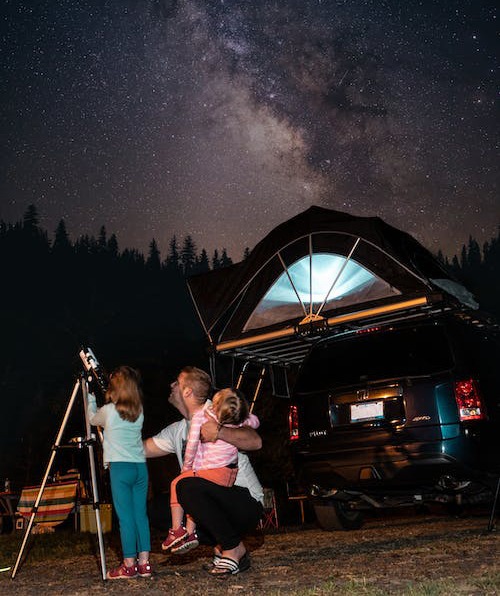
One of the simplest and least expensive pastimes is stargazing. You can start watching meteor showers, comets, constellations, and the Moon without using any equipment. However, the further into the Universe you wish to look, the more time you spend staring upward. Telescopes can help in this situation. Your setup may quickly become pricey and complicated. This article section lists the items you’ll need to keep your telescope kit easy, economical, and enjoyable.
1. Astronomy Telescopes
Choosing a high-quality telescope is like choosing a reliable car. Beginner astronomers must decide on one of the four telescope types: reflectors, refractors, hybrid, and Dobsonian. Be aware that a new class of telescopes running solely on your mobile smartphone has just hit the market. Things are about to get very fascinating for amateur astronomy. Just purchase an “image-erecting” prism diagonal to ensure your images are upright rather than upside-down. No matter what you decide, keep yourself from changing by getting a cheap scope. Before you’ve seen it, poor optics and inadequate equipment will make you uninterested in the splendor and majesty of the sky.
2. Binoculars for astronomy
Good skywatching binoculars can be helpful if you want to start small and portable or feel intimidated by the thought of carrying a large telescope around. Binoculars can reveal night-sky vistas invisible to the unaided eye at a reasonable price and relatively little weight. Binoculars can also be used during the day for various activities, including birdwatching, sports, people-watching, maritime navigation, and more. Instead of the “roof prisms” seen in smaller sports optics, “porro prisms” are typically used in astronomical binoculars.
3. Sky-watching Applications
Several astronomy specialists vouch for digital planetarium software to map out the night sky. You’ll save a ton of time finding the best targets for your location and time of year if you print out paper star charts beforehand or bring your laptop or tablet. There are many Android and iOS apps for smartphones and tablets. Choosing one with a red-screen setting is crucial to keep your gloomy adaptation.
4. Astronomy Recliner Chair or Lounger
Your arms and back will appreciate it if you pack a lightweight, reclining lawn chair or “lounger” using binoculars. Numerous meteor showers have been won or lost based on the chair’s comfort. Skywatchers using telescopes should give a mainly designed astronomy chair some serious thought, especially if you own a refractor because the eyepiece is “down” and the tube is lengthy. The seat can slide down to the floor or up to where your eye would be standing. The ones with padded backrests are the best.
5. Filters that Reduce Light Pollution
Broadband filters called Light Pollution Reduction (LPR) reduce light pollution by removing wavelengths or colors typically linked to it. They operate under the premise that most outdoor lighting uses low-pressure sodium vapor lamps, emitting a warm, yellowish tint.
The Benefits of Stargazing
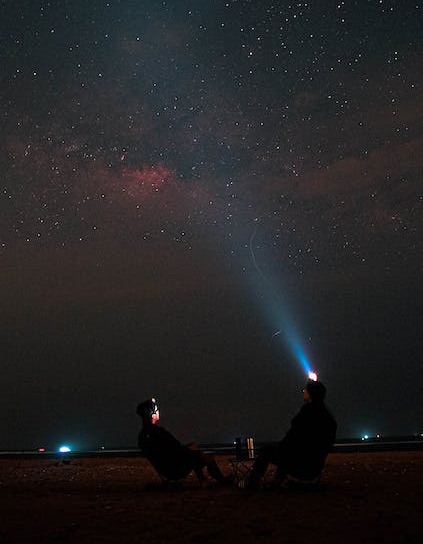
You’re not the only one looking for serenity, quiet, and a sense of direction in this period of uncertainties. Stargazing offers a chance to reconnect with nature and the outside world without leaving your yard, balcony, porch, or sidewalk. Stargazing sessions are becoming more popular as a hip way to practice mindfulness, allowing individuals to unwind and find inner peace in the heavenly realm.
1. It takes you outside and into nature.
Getting a good view of the night skies requires you to venture outside, and the advantages of being in nature are well known. Light pollution in towns and cities blocks our view of the natural spectacle of the Universe. Research found that even 15 minutes of sitting in nature can help us feel mentally refreshed, and several studies have connected going on nature walks to better mental health. People’s lives can be significantly impacted by traveling to a beautiful natural setting where they can see things like the Milky Way away from the city.
2. It inspires you to be creative.
These days, astrophotography makes up a significant portion of stargazing, and social media is complete with amazing pictures that might serve as inspiration. Taking up the camera can open a whole new world of creative possibilities. With a straightforward DSLR and tripod, capturing starry skies is simple. Still, smartphone technology is so advanced that many people use nighttime photography applications directly on their phones instead.
3. It helps to reduce stress.
According to a study, stargazers are more in tune with the natural world. Participants emphasized a variety of additional advantages, including having pleasant feelings. There has been a sharp rise in interest in astronomy from the health and welfare standpoint.
4. It’s both a solo and social hobby.
Astronomy is fantastic since it can be as social or as alone as you choose. You can decide to go observing the stars with simply members of your own family. You can also participate in stargazing events and socialize with like-minded people while sharing your enthusiasm for the night sky.
5. Provides a New Outlook on Life
You’ll gain a fresh perspective on life by staring at the glittering stars in the incredible night sky. You may even get shivers as you quietly gaze at the stars. We don’t often experience this kind of tranquility in our hectic lives. When you do find some time to observe the stars, you notice that your thoughts are drawn to a pressing issue—something you may have never given much thought to or something you may have ignored frequently. You’ll be astounded by the ideas that cross your mind while observing the brilliant stars above you.
Conclusion
Stargazing is an exciting and fulfilling hobby with many educational and therapeutic advantages. Stargazing benefits everyone, from lowering tension and anxiety to fostering mindfulness and igniting curiosity. Anyone may appreciate the night sky’s beauty and discover the cosmos’ mysteries by taking a few simple precautions and investing in the proper tools. There are endless possibilities to get in touch with nature and learn about the cosmos, whether stargazing by yourself or with family and friends. Spend time looking at the sky to experience the magic of stargazing. Stargazing is a fantastic activity. You are momentarily set free from life’s hardships, if only for a little while, but it is still worthwhile. Despite being thousands of light years away, the stars are very near to us. They can temporarily calm your heart by speaking to it. So get forth and seek out the stars.
